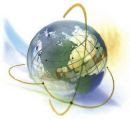Candlestick charts provide the same information as a bar chart (open, high, low and close prices)
but does so in a clearer, easier to recognize style, in fact a visual depiction of price action during a single time period or series of time periods.
One candlestick itself can provide important information about the strength or weakness of the market during a given day or other time period, visually portraying where the close is relative to the open. Although one candle can be significant, depending upon its location on a chart, a candlestick pattern usually takes several candlesticks to produce chart formations that give the best signals.
Candlesticks may look identical but have an entirely different meaning after an uptrend than they do after a downtrend. Because they can be used in analysis in much the same way as bar charts, candlestick charts have quickly become a favorite of traders and analysts since being introduced to the West in 1990. Candlestick analysts have also added a little mystique to candlestick charts by giving various patterns clever names and providing more descriptive characteristics for these patterns than is the case in typical bar chart analysis.
Both types of charts, bar and candlestick, have their double tops, inside days, gaps and other formations. But candlestick analysis ascribes more meaning to the candlestick “bodies” – price action between the open and close – and to the “shadows” or “tails” – price action that takes place outside of the open-close range for a period.
Because of their popularity in recent years, you should become acquainted with the nuances and terms of candlestick charts if you aren’t already.
http://www.accesstradingmgmt.com/Forex.html
Monday, October 20, 2008
Subscribe to:
Post Comments (Atom)

![[Most Recent Quotes from www.kitco.com]](http://www.kitconet.com/images/sp_en_6.gif)







No comments:
Post a Comment